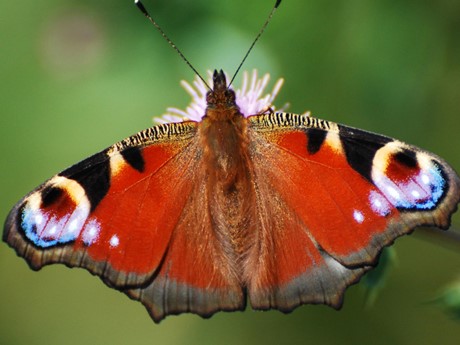Volunteer Spotlight: Roger
Alex Marshall, 23/08/2024
Nature’s Calendar is a citizen science project. That means the data is collected from people of all ages, backgrounds and abilities, and not necessarily by people who are scientists by profession (although, scientists can of course take part, too!). Anyone can volunteer to become a citizen scientist, and every single Nature’s Calendar volunteer adds vital information to the database.
The dedication of some volunteers has been especially important, as these people have been recording the changing seasons with Nature’s Calendar for 20 years or more, some have even been recording since the very beginning in the year 2000!
Introducing Roger
One of those dedicated volunteers is Roger. Roger has been recording the seasonal changes in Essex for over 20 years and has kindly offered to answer a few questions about his experience as a Nature’s Calendar recorder.
Since 2001, Roger has submitted around 1500 records to Nature’s Calendar spanning 7 different species groups. Over 1000 of those records have been for tree and shrub species and around 200 have been insect records, with wildflowers being the next popular type of species that Roger has recorded over the years.
It’s records like Roger’s that become so important in studying the effects of climate change on our local wildlife. Short-term records are useful in studying the effects of weather fluctuations, but we need to be able to see long-term changes over several years in order to study the effects of a changing climate.
The interview
We reached out to Roger to learn more about his experience as a Nature’s Calendar volunteer:
When did you start recording for Nature's Calendar?
I cannot remember exactly when but I am almost certain that it was in the 1990s when I retired from work and had more time to spend on matters of personal interest but I know that I had recorded this kind of information well before I joined a formal system.
I think that I can only say that this is the kind of person that I am - I have always liked to collect information and if I am told that it is of some use to other people and to science, then that is an extra incentive.
I think that I was recruited by hearing an item on the BBC about how volunteers were being sought to submit any information which they already had on such matters and at the same time to start doing so on a regular basis.
Why do you record?
I think that most of the answer is given in my response to the first question. Essentially it is an easy and pleasant thing to do and if I am helping to expand knowledge, then why not join in. Ultimately one is promoting the general good. I would just add that increasing concern about global warming gives me a little bit of extra incentive.
Have you noticed any changes over the years that you have been recording?
I have noticed that spring events are occurring a little earlier, but it is less clear how autumn ones have changed. I used to think of May as the month for bluebells whereas nowadays they have finished by then and the hawthorn is fully out by then, but I would need to look at my records to be sure how things have changed - perhaps it is just that I look out for these things more than I used to. What I notice is the effects of hot and dry summers, I do worry about the future of the planet and the impacts of global warming.


Bluebell, Roger’s most recorded flower species. Photo credit: Anita Nicholson WTML
Do I have a favourite species?
Not really, out of the Nature’s Calendar species. Hawthorn and horse chestnut are plentiful round here which makes them easier to record, while there is a particular rowan which I often pass in a garden in a nearby road, but I try to record as many species as I see although sometimes I forget to write down the dates of the various events, especially if they occur in quick succession, which annoys me!


Rowan, Roger’s most recorded species. Photo Credit: Shaun Nixon WTML
What would you say to others who are considering volunteering with Nature’s Calendar?
I would say that it might get you out into the air and doing a little more exercise, it is interesting and simple, and you would be contributing to our knowledge of how nature is responding to changes in weather.

Peacock butterfly, Roger’s most recorded insect species. Photo Credit: Anita Nicholson WTML



Elder flower, Roger’s most recorded shrub species. Photo credit: Brian Legg WTML
Thank you, Roger, and thank you to all of our wonderful Nature’s Calendar volunteers! Whether you have sent in 1 record or 1000 records – your contribution is so important, THANK YOU.
If you have been inspired by Roger to get involved with Nature’s Calendar, why not begin by registering for an account and reading more about how to get started, or watching our recent webinar with Liz Bonnin.
